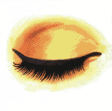
“I had a great seat on my first visit to Croke Park, on my father’s shoulder, for the 1963 All-Ireland football final between Dublin and Galway and Dublin won. I was seven years of age at the time and five years later I played my first game there and we won as well. It was only when I looked at the place from the pitch that I realised how huge it was with the stands towering over us... The experience of playing major games in Croke Park was a big help to me in my soccer career – I never ‘froze’ in other big places as a result.”
Read more at:
Croke Park: a history by Tim Carey
Shelved in the Leisure and Hobbies section on level 1: 796.068415 CAR
How can you use colour to create mood in your photographs?

One of the most elusive qualities to capture on film is that of mood or atmosphere. With modern cameras and film, subjects are recorded with considerable clarity and detail, and this can easily diminish the sense of mood in an image. While lighting and tonal range of a scene will have a considerable effect on this aspect of a photograph, colour is perhaps the most significant element. We respond emotionally to colour. Though it may sound clichéd, blues and greens really do evoke a peaceful and relaxed atmosphere, while orange and yellow create a cosy and inviting mood. Bright saturated colours suggest an upbeat and lively atmosphere and dark muted colours produce a more sombre and more introspective response.
Read more at:
100 ways to take better photographs by Michael Busselle
Shelved in the Leisure and Hobbies section on level 1: 771 BRU
In the blink of an eye

“Wilson says that we toggle back and forth between our conscious and unconscious modes of thinking, depending on the situation. A decision to invite a co-worker over for dinner is conscious. You think it over. You decide it will be fun. You ask him or her. The spontaneous decision to argue with that same co-worker is made unconsciously – by a different part of the brain and motivated by a different part of your personality.
Whenever we meet someone for the first time, whenever we interview someone for a job, whenever we react to a new idea, whenever we’re faced with making a decision quickly and under stress, we use that second part of our brain. How long, for example, did it take you to decide how good a teacher your professor was? A class? Two classes? A semester? The psychologise Nalini Ambady once gave students three ten-second videotapes of a teacher – with the sound turned off – and found they had no difficulty coming up with a rating of the teacher’s effectiveness. Then Ambady cut the clips back to five seconds, and the ratings were the same. They were remarkably consistent even when she showed the students just two seconds of videotape. Then Ambady compared those snap judgements of teacher effectiveness with evaluations of those same professors made by their students after a full semester of classes, and she found that they were essentially the same. A person watching a silent two-second video clip of a teacher he or she has never met will reach conclusions about how good that teacher is that are very similar to those of a student who has sat in the teacher’s class for an entire semester. That’s the power of our adaptive unconscious.”
Read more at:
Blink: the power of thinking without thinking by Malcom Gladwell
Shelved in the Main Shelves on level 2: 153.44 GLA

No comments:
Post a Comment